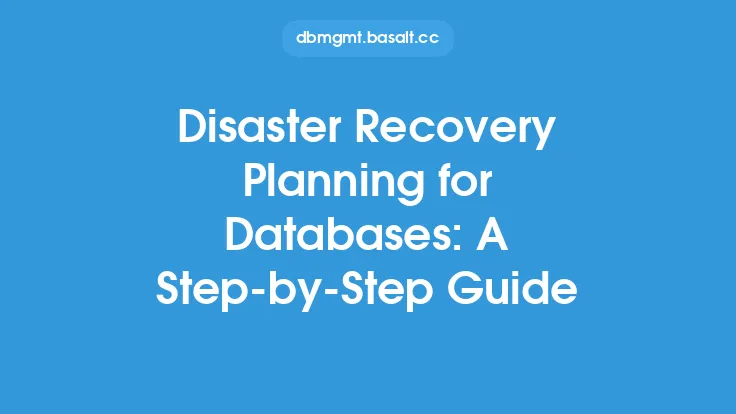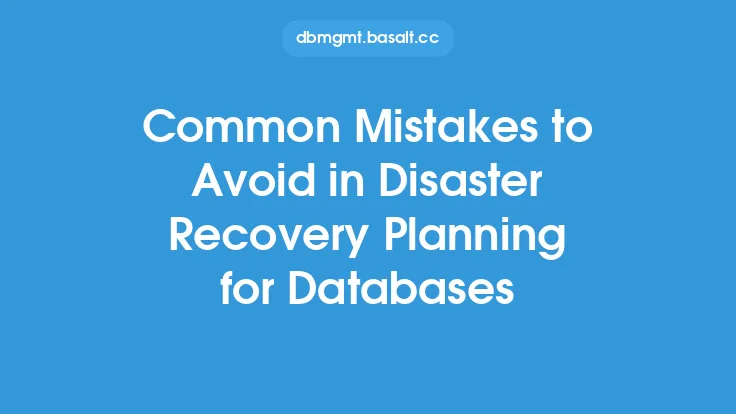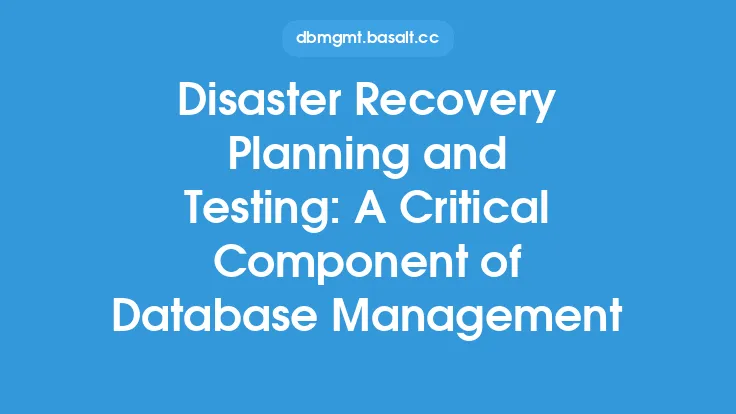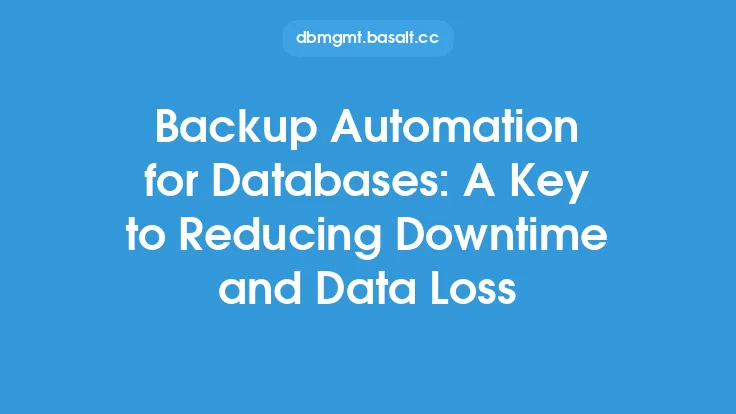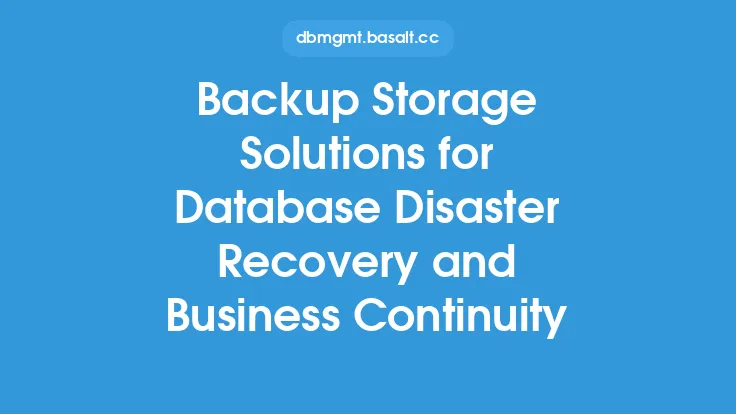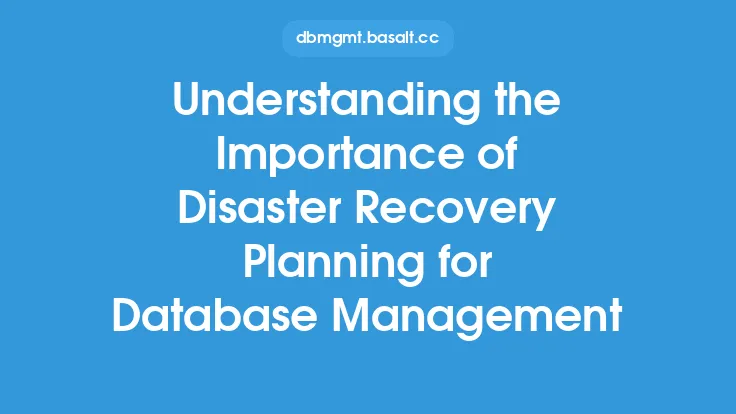Developing a comprehensive disaster recovery strategy for databases is crucial to ensure business continuity and minimize data loss in the event of a disaster. A well-planned disaster recovery strategy can help organizations quickly recover from disasters, such as natural disasters, hardware failures, or cyber-attacks, and restore database operations to a stable state. In this article, we will delve into the key aspects of developing a disaster recovery strategy for databases, including the importance of database backup and recovery, data replication, and database clustering.
Introduction to Database Disaster Recovery
Database disaster recovery refers to the process of restoring database operations to a stable state after a disaster. This involves recovering data from backups, rebuilding database systems, and restoring database services. A disaster recovery strategy for databases should be designed to minimize downtime, data loss, and business disruption. It should also ensure that database systems are restored to a consistent state, with all data intact and up-to-date.
Database Backup and Recovery
Database backup and recovery is a critical component of a disaster recovery strategy. Regular backups of database data, logs, and configuration files are essential to ensure that data can be recovered in the event of a disaster. There are several types of database backups, including full backups, incremental backups, and differential backups. Full backups involve backing up the entire database, while incremental backups involve backing up only the changes made since the last backup. Differential backups involve backing up all changes made since the last full backup.
Database backup tools, such as SQL Server Backup and Oracle RMAN, provide features such as automated backup scheduling, data compression, and encryption. These tools also provide options for backing up data to various storage devices, including disk, tape, and cloud storage. When designing a database backup strategy, it's essential to consider factors such as backup frequency, backup retention, and backup storage.
Data Replication
Data replication is another critical component of a disaster recovery strategy. Data replication involves duplicating database data in real-time or near real-time to a secondary location. This ensures that data is available at the secondary location in the event of a disaster at the primary location. There are several types of data replication, including synchronous replication, asynchronous replication, and semi-synchronous replication.
Synchronous replication involves replicating data in real-time, while asynchronous replication involves replicating data with a delay. Semi-synchronous replication involves replicating data in near real-time, with a delay of a few seconds or minutes. Data replication can be implemented using various technologies, including database mirroring, log shipping, and storage replication.
Database Clustering
Database clustering is a high-availability technology that involves grouping multiple database servers together to form a cluster. Each server in the cluster can access the database, and if one server fails, the other servers can take over. Database clustering provides several benefits, including improved availability, scalability, and performance.
Database clustering can be implemented using various technologies, including shared-disk clustering, shared-nothing clustering, and distributed clustering. Shared-disk clustering involves sharing a common disk storage device among all servers in the cluster. Shared-nothing clustering involves each server having its own disk storage device, while distributed clustering involves distributing data across multiple servers.
Disaster Recovery Plan Development
Developing a disaster recovery plan involves several steps, including risk assessment, business impact analysis, and plan development. Risk assessment involves identifying potential risks and threats to database operations, while business impact analysis involves assessing the potential impact of a disaster on business operations.
Plan development involves creating a detailed plan for recovering database operations in the event of a disaster. The plan should include procedures for backup and recovery, data replication, and database clustering. It should also include procedures for communicating with stakeholders, assessing damage, and restoring database services.
Testing and Maintenance
Testing and maintenance are critical components of a disaster recovery strategy. Regular testing of the disaster recovery plan ensures that it is effective and can be executed quickly and efficiently in the event of a disaster. Maintenance involves regularly reviewing and updating the plan to ensure that it remains relevant and effective.
Testing should involve simulating various disaster scenarios, including natural disasters, hardware failures, and cyber-attacks. It should also involve testing backup and recovery procedures, data replication, and database clustering. Maintenance should involve regularly reviewing the plan, updating procedures, and ensuring that all stakeholders are aware of their roles and responsibilities.
Conclusion
Developing a comprehensive disaster recovery strategy for databases is crucial to ensure business continuity and minimize data loss in the event of a disaster. A well-planned disaster recovery strategy should include database backup and recovery, data replication, and database clustering. It should also involve regular testing and maintenance to ensure that the plan is effective and can be executed quickly and efficiently in the event of a disaster. By following these best practices, organizations can ensure that their database operations are protected and can be quickly recovered in the event of a disaster.
